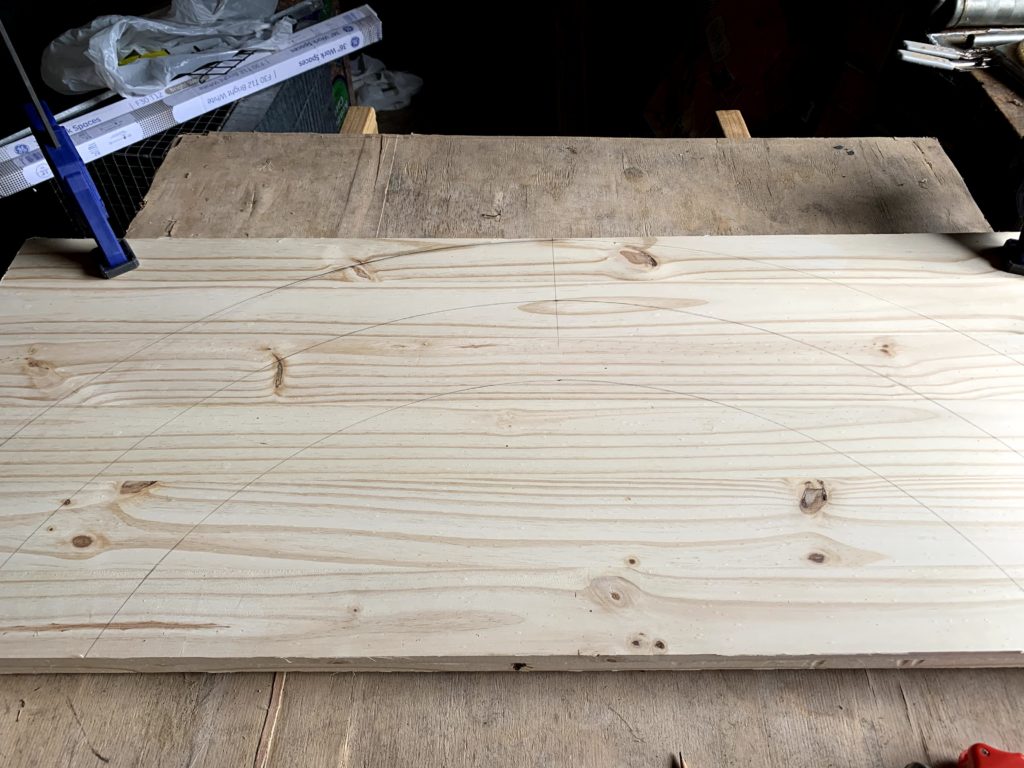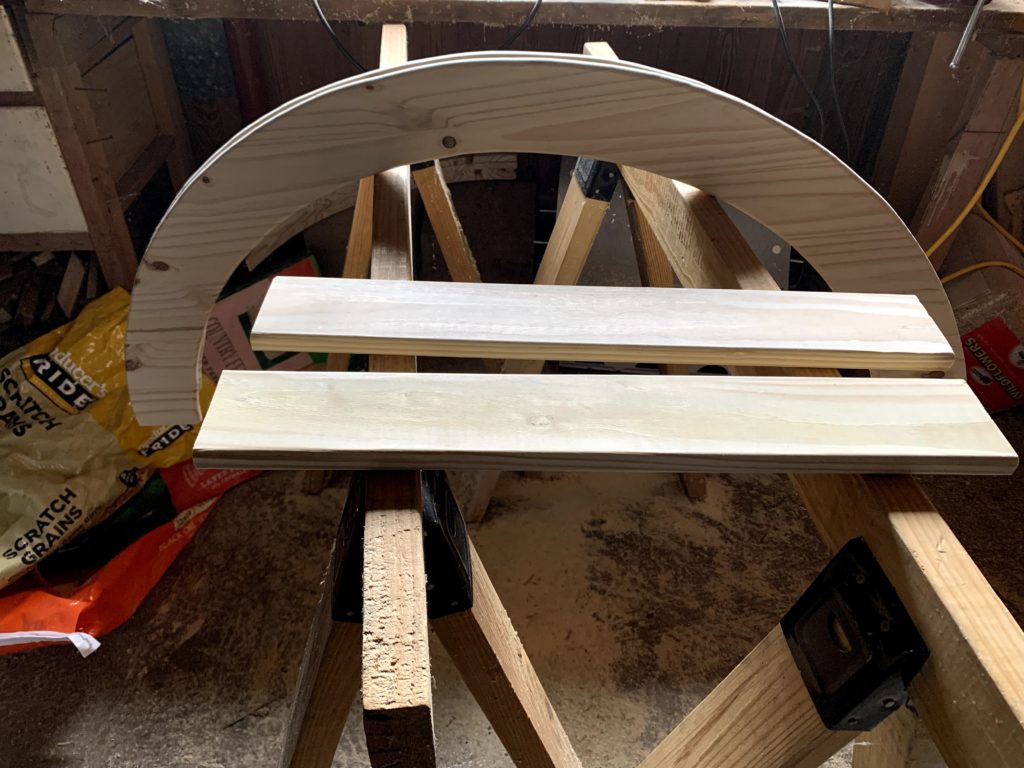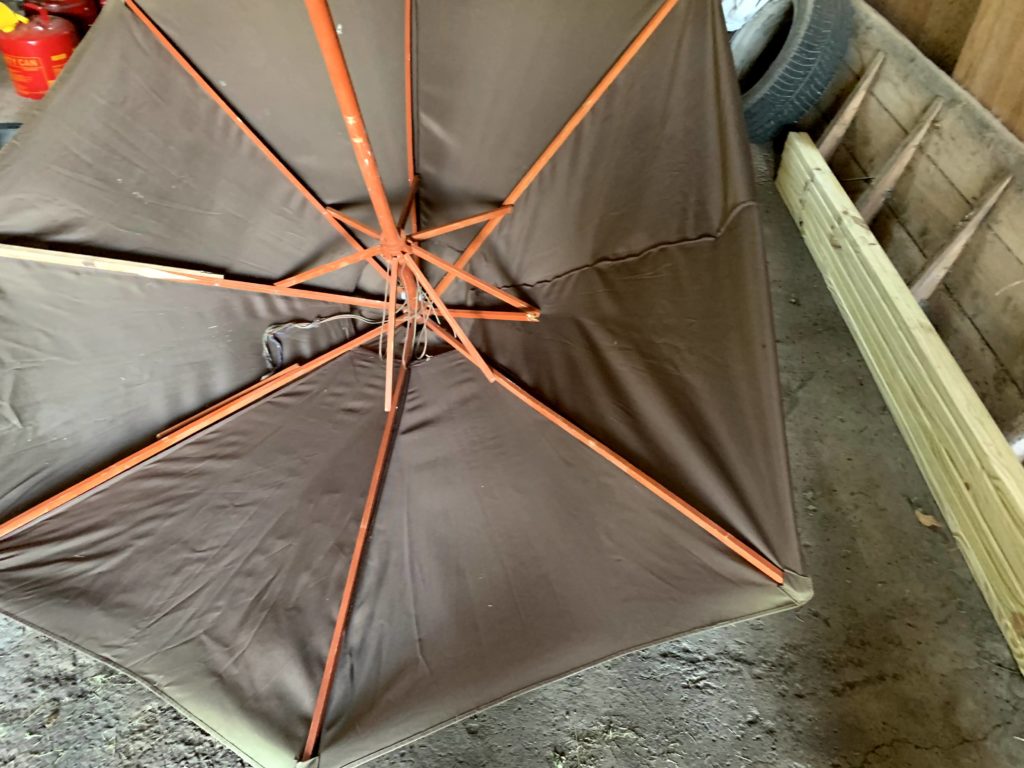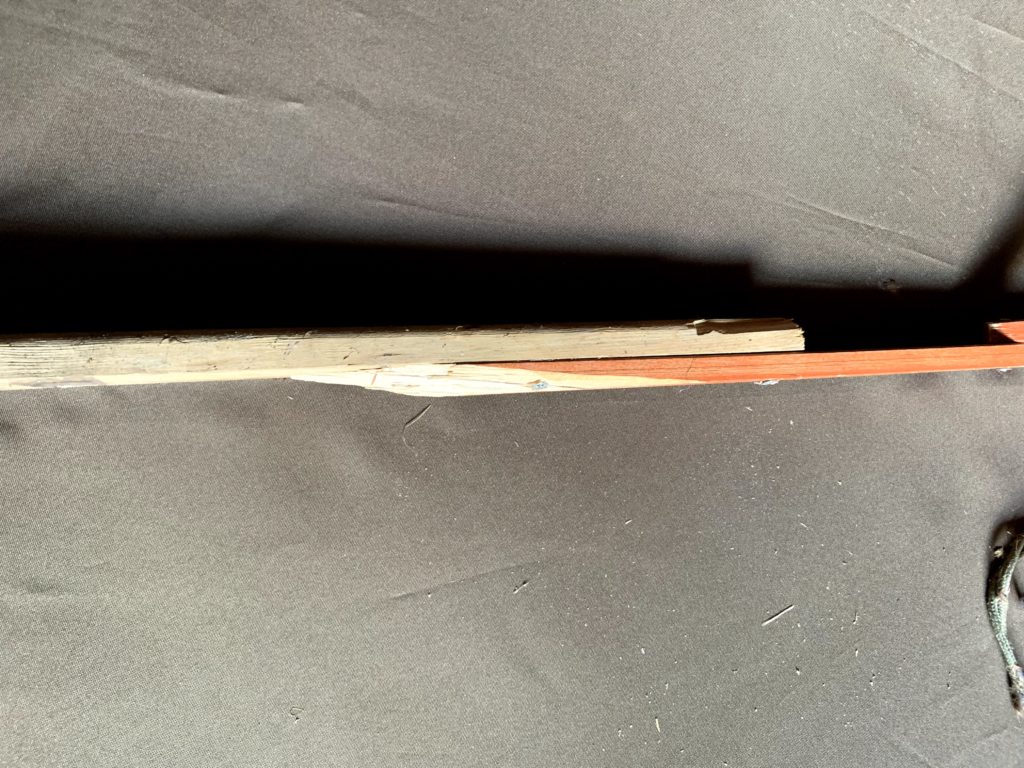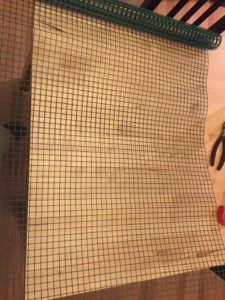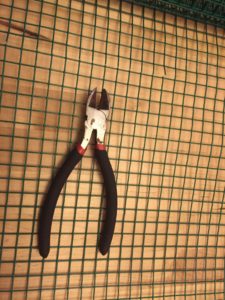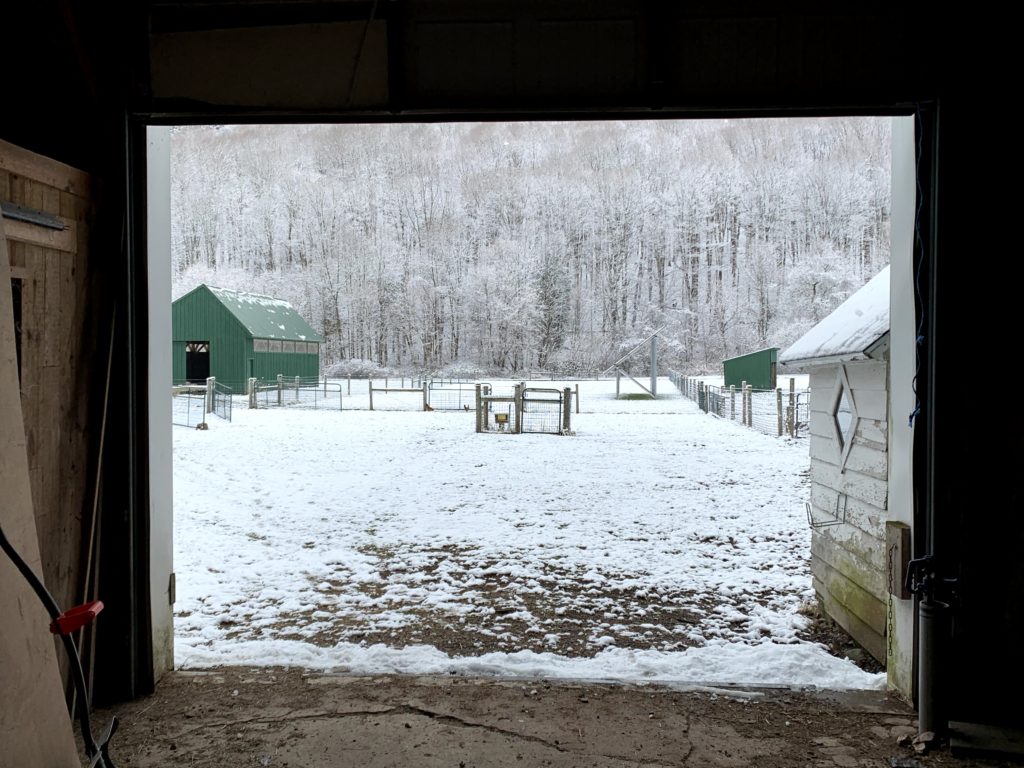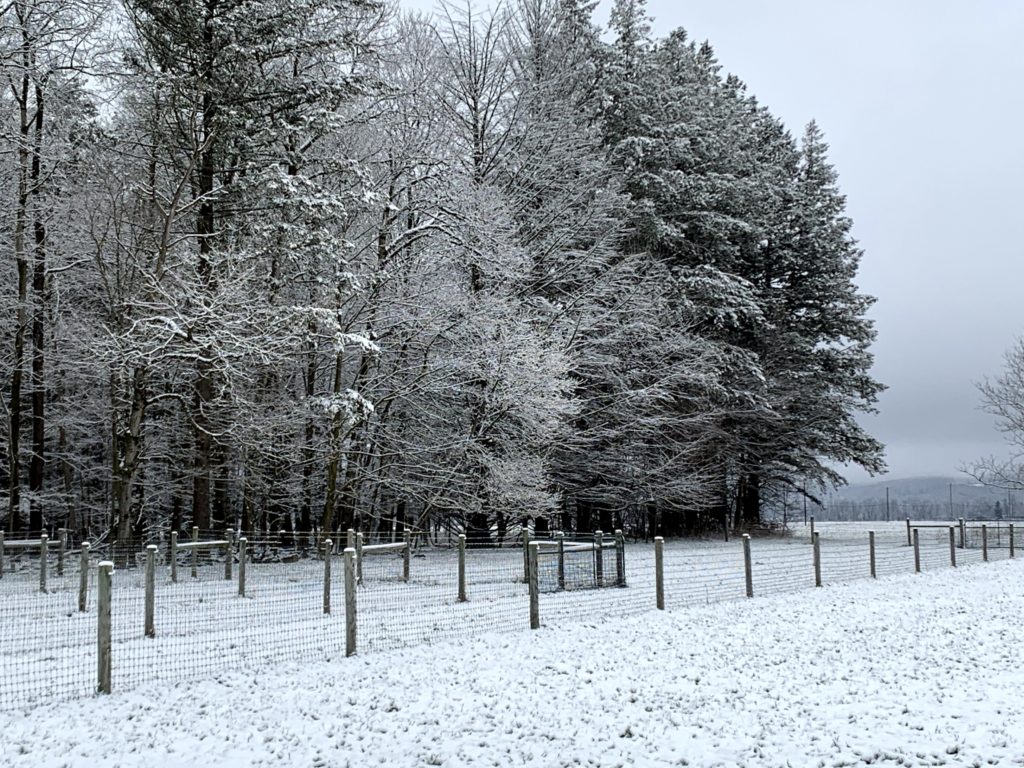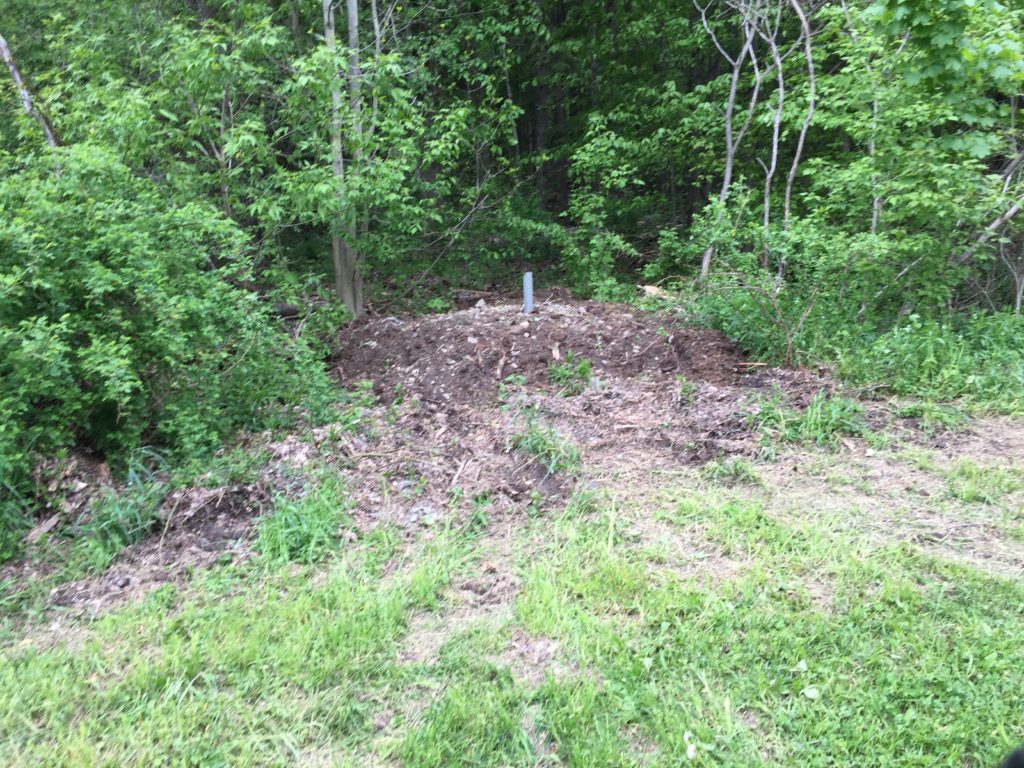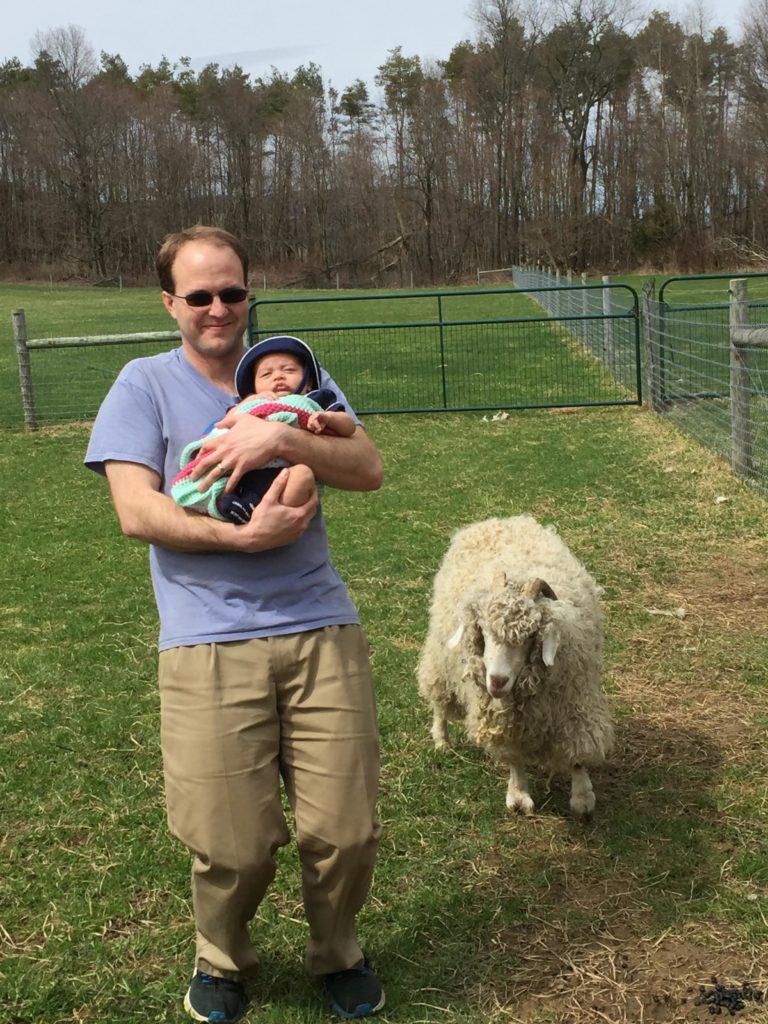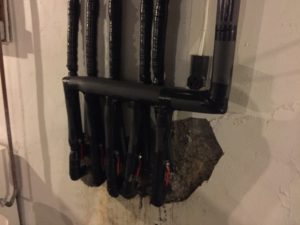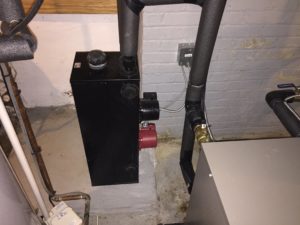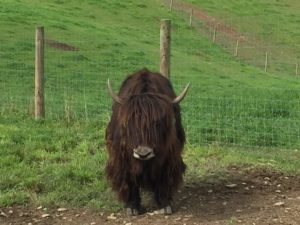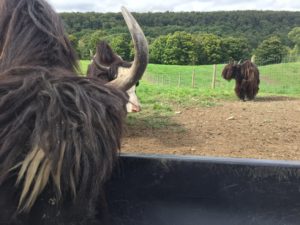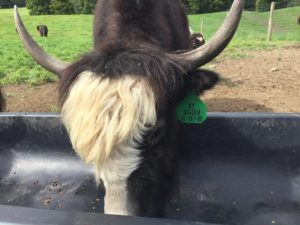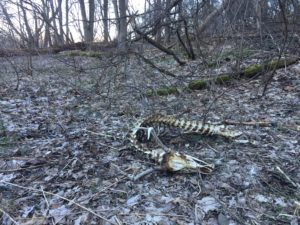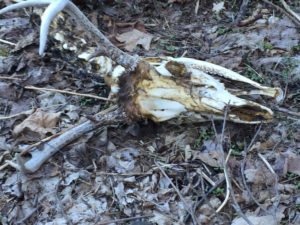Just before we picked up our new dog Rocky, one of our hens was killed during the day outside the fences. It could have been any number of predators – a fox seemed pretty likely though foxes aren’t usually likely to be out in the middle of a sunny day.
But it turned out it wasn’t a fox. We had seen a cat occasionally around the pastures in the weeks prior, but didn’t think a cat would normally attack an adult chicken. However, after the hen was killed, we saw the cat with increasing frequency. The cat was hanging out just outside the fences watching the other chickens. The cat was even spotted hanging out just outside the chicken coop door at one point.
We decided to email the neighborhood list to see if someone’s cat was loose. Receiving no positive responses, we decided to try to trap the cat.
We put out a trap with a plain can of tuna in it, expecting it to take a few days before the cat felt comfortable enough with a new box in its environment to try to get inside. We were wrong. Checking on the trap after an hour or so of putting it out, the cat was already inside.
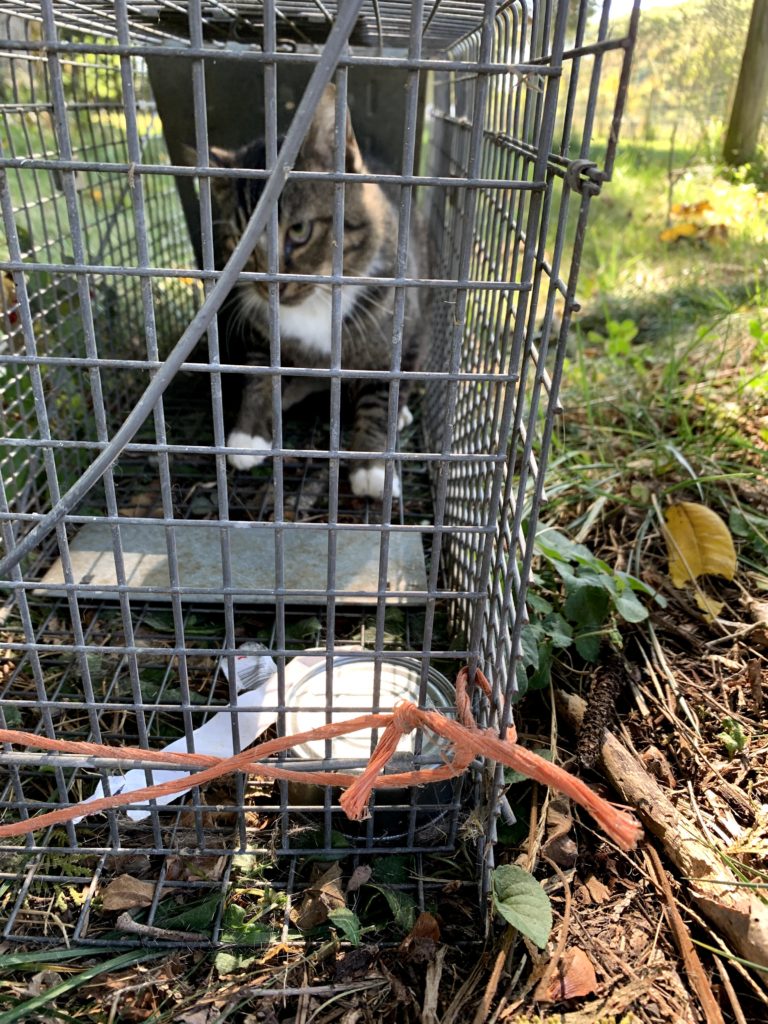
He was not very happy to be in a trap. We quickly put on protective gear (think coats in case he tried to scratch) and moved him into a large dog crate to give him some more space.
Continue reading
